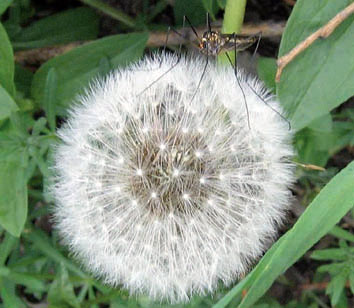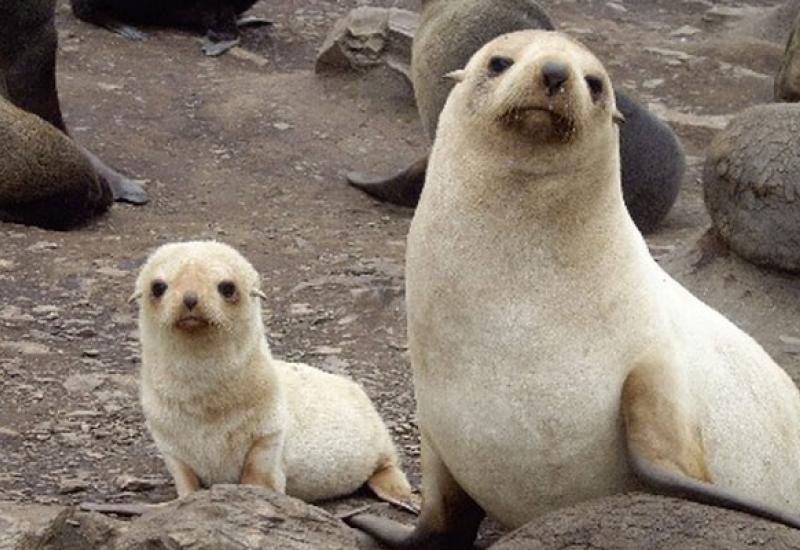The man is the king of nature. This phrase, known to everyone since childhood, has already "had a dry mouth" (especially today, when the nature "thanks" to our irrational attitude with the earthquakes, hurricanes, the greenhouse effect and other manifestations of its power).
Of course, the invention of man cars and airplanes, rockets and computers, man-made materials with miraculous properties and treatment of terrible diseases put the Homo sapiens over other creatures. However, among "our younger brothers" one can find those with the amazing abilities.
When graceful fashion models paced the podium, we admire their long and shapely legs, but with little body of daddylonglegs only 6 mm its legs are 25 times longer than the body!

Legs and feet of many of the fauna is not only long but also very durable. Thus, the most powerful mobile crane, created by man, is "Rosenkranz K-10001." Its capacity is 1000 tons with he self-weight of 810 tons (ratio 1.23). At the same time, the rhinoceros beetle can keep on the back of a weight of 850 times greater than its own, and the beetle mormalia of 0.2 g weight can carry a load 500 times (100 g)! Thus, the strength of the clutches of some beetles are much more on the strength of "legs" of the cranes.
In 1968, Robert Beamon jumped in length of 8.9 m, which is five times the height of a man, and 10 centimeter bullfrog jumps 6.5 m! The situation is similar in the high jump when a man almost can not "jump over his head", the flea jumps in height that exceeds 130 times its size (in this case it is experiencing the overload 200g).
The fastest land animal - Asiatic cheetah - develops in open terrain speed of 100 km / h, and a man-made car with a rocket engine - almost 1020 km / h, but the nature in the water remains unsurpassed. The world's fastest-class submarine "Alpha" built in the former Soviet Union, is moving at a speed of nearly 78 km / h, and the fish sailboat - up to 109 km / h (at the same time the swordfish can swim at speeds up to 130 km / h).
And have you ever thought how fast you can move with your own hands? Ordinary mosquito with its wings makes it still more faster - up to 1000 strokes per second (for a tiny midge genus Forcipomayia this figure even more - 1,046 strokes per second)!
Okay, enough of the limbs. To have a greater force or to move quicker, but there is more to come, it is necessary to timely notice the danger, or, on the contrary, something pleasant. What the "range of vision" have the spiders with their eight eyes (a mollusk scallop has one hundred of them)?
And what "sharp eyes" should have bees to build comb hive! The wall thickness of the cell bee combs of 0.073 mm with a deviation of not more than 0,002 mm. How does the bee check the wall thickness during operation? It turns out that the bee from time to time with its jaws presses the wall of wax. Wall resiliently flex and again recovers its shape. Resulted deflection bee measures with its palps. Since the hive has constant temperature of 35 ° C, and the composition and properties of wax are constant, the magnitude of deflection depends of the wall thickness. If it is big (the deflection is too small), the bee removes excess wax, if the wall is thin and easy to bend – attaches the wax.

In the famous movie "The scent of a woman" the protagonist accurately named the perfume used by his interlocutors. And the fauna surprises us its acuteness of smell even more. Get at least sharks in the sea, they can smell a drop of spilled blood in three to four kilometers! If 1 cm3 of blood dissolved in 600 tons of sea water, the shark selahia will easily establish habitat of the smell of blood and will swim there with a speed of 45-50 km / h. In this case, the ability of sharks to sense odors at a great distance significantly exacerbated when they are hungry. "Tigers" of the seas can also boast of a highly "electric" feeling, some species of sharks are able to distinguish between the potential difference of 0.01 mV. This is the highest electrical sensitivity known in animals.
And take the scary shark teeth! They are stuck in the doomed victim with pressures up to 300 MPa at a time when the allowable stresses of high structural steels rarely exceed 200 MPa. In this shark teeth which grow up to 7 cm, are arranged in rows. Each jaw contains six rows, each of which has up to 26 teeth, but "working" only the front row. Shark teeth often loses, breaks them, and passes a week, and the corresponding tooth of the next row is moved to the first one. Tiger shark in a decade able to grow, use and replace up to 24 thousand teeth! The whale shark has seven thousand teeth, and a giant - about two thousand! These teeth do not give small prey escape from the jaws when it is closed.
The height of modern man rarely exceeds two meters. And this figure is reached within the first twenty to twenty-five years of age (the average growth rate of 10 cm / year). Some of the species of bamboo grow at a rate up to 91 cm per day (about 4 cm per hour)!
Not everyone can shoot accurately: it is necessary to have a steady hand, strong nerves, instant response and a keen eye, and besides - reliable and accurate weapon. At the same time, all perciformes fish family - have to have all of these properties, as they feed on insects, sniper shoot down a jet of water from its own mouth.
Lost in the woods, we vainly straining the vocal cords, however howler monkeys scream is heard for 16 miles (the distance from the center of Kiev to Vyshhorod or Brovary).
The "motor" in the breast of each of us. This robust "pump", created by nature, for decades at a frequency of 70-75 shocks per minute is pumping blood. However, in normal canaries, the figure is 1,000, while the hummingbird-bumblebee - up to 1260 (although their "resource" with such intense activity is significantly less).

We look with envy at the "walrus", which a year round enjoy a swim in the open water. With what then, eyes, we then should look at the tardigrades - invertebrates with calf length 0.1-1.2 mm just that his appearance and gait resemble clumsy bear and that in two or three handfuls of wet sand or soil, there are tens of thousands: they are "quietly "withstand temperatures of minus 270 ° C (remember that absolute zero is minus 273,16 ° C)?! But that's not all: According to the Encyclopedia Britannica, these amazing creatures come to life at room temperature after an eight-day stay in a vacuum, a three-day stay in a helium atmosphere and a few hours of "winter swimming" minus 272 ° C! They also withstand many hours of heating at 150 ° C, the X-ray radiation, which is hundreds of times greater than the lethal dose for humans, and may be in a state of apparent death in over one hundred years (the metabolism slows them down to 0.01% or less) and then return to normal within a few minutes!
As you can see, in many respects the human is not the first, even the size of the brain is between a horse (650 g) and dolphin (1800). It is also not the first place. Let comfort ourselves with the fact that these figures can not be the measure of the intellectual development of living beings.

